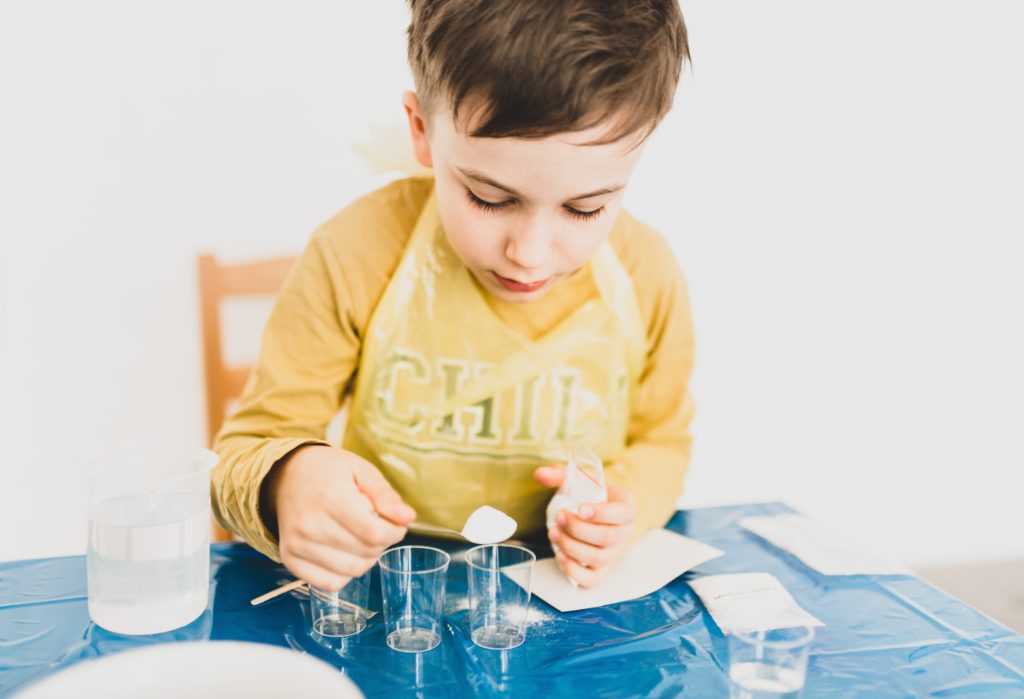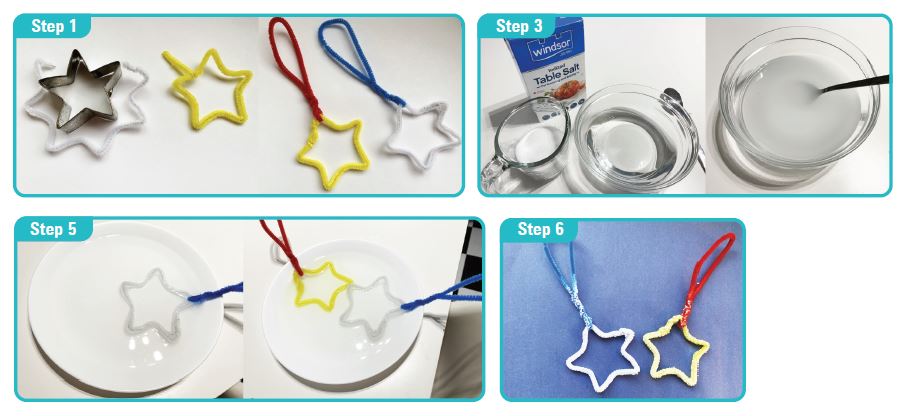
Not only are STEM activities great fun for kids, they’re also educational. And many of them, like this crystal-growing experiment from Mad Science of Washington, don’t even require special supplies. In fact, you probably already have what you need in your kitchen cabinets.
So grab some goggles, a pretend lab coat and let’s begin!
Crystal Star Ornament
What you need:
• Table salt
• Water
• Bowl
• Spoon
• Measuring cup
• Plate
• Pipe cleaners
• Cookie cutter—simple shape like a star or snowflake
• Optional: food coloring
What you do:
- Twist your pipe cleaner into a simple star shape using a cookie cutter as a guide to help you bend the pipe cleaner. Twist another pipe cleaner around it to make a handle.
- Measure 1 cup of warm tap water and pour it into a bowl.
- Add ½ cup of salt to the warm water and stir until it is almost dissolved; there will be some salt left at the bottom of the bowl. This should take about 3 to 5 minutes. You have just made a saturated salt solution.
- Pour some of your solution onto your plate. It should just cover the bottom. If you add too much, it will just take longer for your crystals to appear.
- Lay your star pipe cleaner shape in the salt solution on the plate. Sprinkle some salt over the ornament. By doing this, you are adding “seed crystals” that will help more crystals form.
- Leave it to absorb the solution for 48 hours. You should see crystals starting to form on the pipe cleaner. The longer you leave it, the more crystals will grow. Hang it to fully dry and enjoy your crystal star ornament!

Now try this:
You can add a couple of drops of food coloring to your salt solution to make colored crystals.
What’s going on:
By adding salt to the warm water and stirring until no more salt dissolves, you have created a saturated salt solution.
This means that you have reached something called the maximum solubility point for salt in water. At the temperature and air pressure conditions where you are doing your experiment, you can’t add any more salt to the solution.
By adding a few grains of salt or “seed crystals” to the pipe cleaner, you are providing the salt molecules in the solution with something to “grab onto.” This action lets them form longer crystals as the water evaporates out of the solution that you made, resulting in some lovely crystals on your ornament. Ice crystals can be seeded and form in the same way as salt crystals—that’s why they look similarly festive!
Fun facts:
Snowflakes are actually ice crystals that are formed high up in the clouds when water freezes. They always have six sides, but every single one of them is unique.
Most sandy beaches are made up of billions of broken quartz crystals. Quartz is a common mineral found in rocks, soil and sand.







